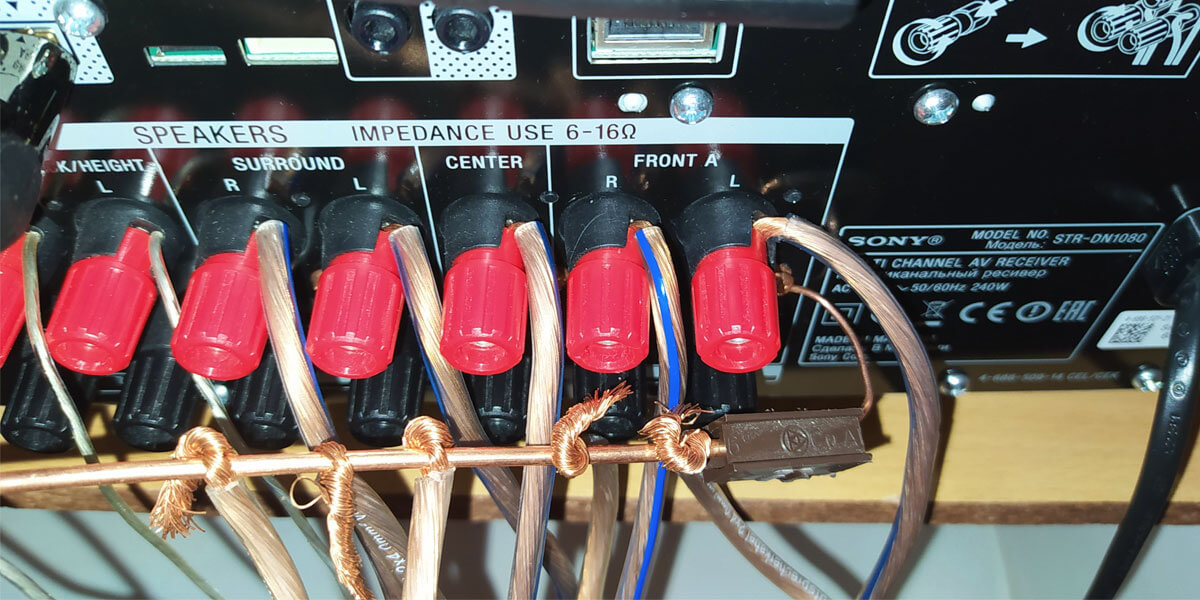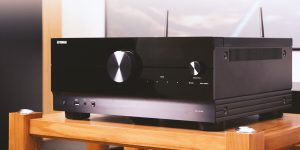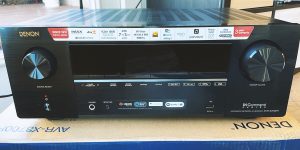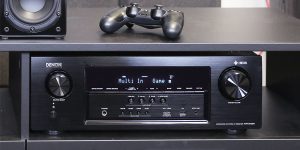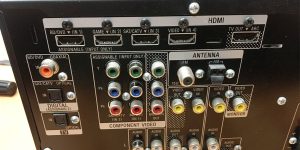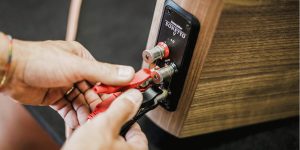Proper grounding is important for AV receivers as it enhances their efficiency and safety. It eliminates electrical noise and interference, resulting in improved audiovisual quality. Additionally, grounding ensures user safety by minimizing the risk of electric shock and equipment damage caused by potential voltage differences.
In this article, I’ll teach you to ground an AV receiver at home. We’ll also consider the types of grounding options and safety regulations you should follow to avoid some problems.
Types of grounding options
When it comes to grounding options for AV receivers, there are several methods available for optimum performance and safety. Let’s look at them in more detail.
Chassis grounding
Chassis grounding creates a strong electrical connection to the ground. It eliminates unwanted noise, ensuring top-quality audio and video. Additionally, it enhances safety by preventing electrical shock and safeguards against static electricity buildup, protecting sensitive electronic circuits.
Signal grounding
Signal grounding establishes a proper ground for audio and video cables. This minimizes unwanted noise and interference, ensuring optimal signal quality. By redirecting electrical noise or EMI to the ground, grounding the signal cables prevents audio and video degradation.
Electrical grounding
Proper grounding of receivers establishes a reliable connection to the ground, minimizing electrical noise and interference for improved audio and video performance. It creates a stable reference point, reducing voltage fluctuations and ensuring a reliable and high-quality audiovisual experience.
How to ground your AV receiver
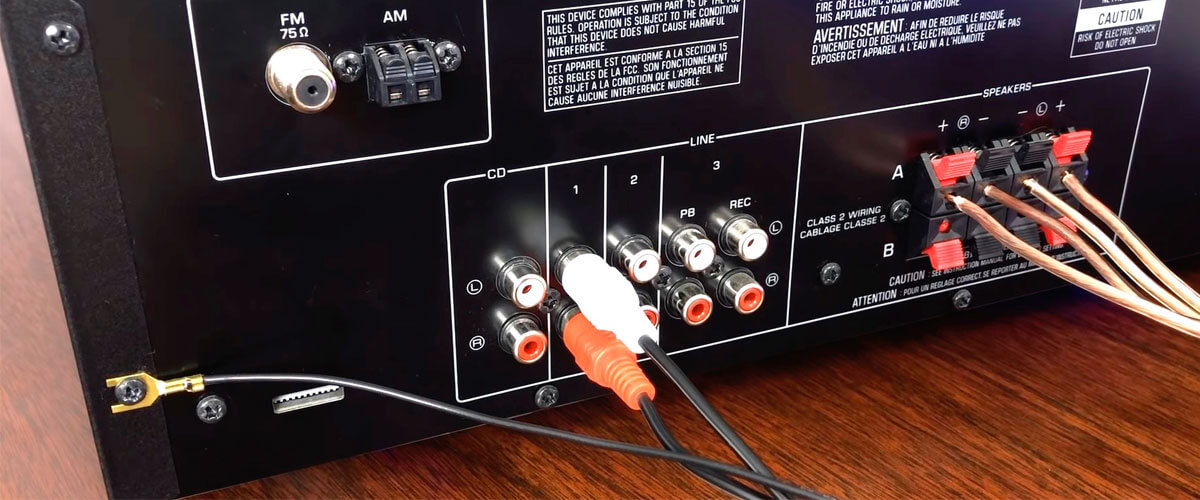
As you already know, grounding your AV receiver, including amplifier grounding with the right techniques, is crucial for optimal performance and safety. I will discuss with you the steps involved in grounding your AV receiver, including specific considerations for amplifier grounding, to help you achieve the best audiovisual experience.
Step-by-step guide for grounding the receiver
I’ve prepared a table with the steps for grounding your AV receiver. Follow these points to make everything right.
| Step | What should you do? | Description |
|---|---|---|
| 1 | Choose a suitable grounding way | Consider the available grounding options. Evaluate the specific requirements of your AV setup and select the method that best suits your needs. |
| 2 | Locate a grounding point | Identify a reliable grounding point in your home or AV system setup. |
| 3 | Prepare the receiver | Turn off and unplug the AV receiver from the power source. Remove any cables or connections that are currently attached to the receiver. |
| 4 | Establish grounding connection | Using an appropriate ground cable or wire, connect one end to the ground terminal on the AV receiver. |
| 5 | Connect to the grounding point | Securely connect the grounding cable’s other end to the chosen grounding point, ensuring a tight and reliable connection for a low-resistance pathway. |
| 6 | Check grounding continuity | Test the grounding connection using a multimeter or continuity tester. Proper ground audio equipment will show zero or low resistance between the AV receiver’s grounding terminal and the chosen grounding point. |
| 7 | Reconnect cables and power on | Reestablish the cables and connections to the AV receiver. Plug the receiver back into the power source and power it on. |
| 8 | Test and verify | Power up the AV system and assess for hums, buzzes, or interference. Confirm that grounding has improved audiovisual quality and stability. |
Remember, if you have any doubts or concerns about grounding your AVR, consult a professional electrician or audiovisual technician for guidance and assistance.
Tips for ensuring a safe and effective grounding connection
Here are some more tips to help you ensure a safe and reliable ground connection:
- understand the local electrical code.
- use proper grounding materials.
- choose appropriate grounding locations.
- maintain proper ground connections.
- minimize impedance.
- test the grounding system.
- follow manufacturer guidelines.
- properly bond metal structures.
By following these tips, you can enhance the safety and efficiency of grounding connections, minimizing the risk of electrical hazards and promoting reliable electrical performance.
Troubleshooting common hum and noise issues
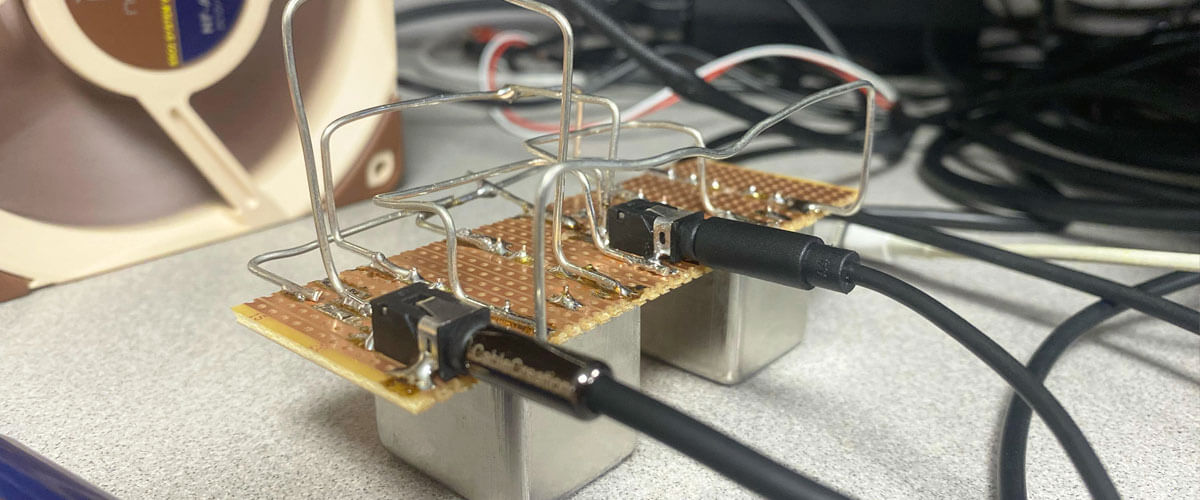
In this topic, we will address common hum and noise issues in audio systems, and I’ll provide effective troubleshooting techniques to restore optimal audio quality.
Overview of common issues that can arise even with proper grounding
AV receivers can encounter hum and noise issues even with proper grounding due to factors like ground loops, poor shielding, nearby electronic interference, and faulty cables. Identifying and addressing these problems is crucial for ensuring clear and high-quality sound.
Steps for identifying the source of the problem
I’ve prepared several steps to help you eliminate hum and noise from your AVR. Among them are:
- Check power connections.
- Check grounding.
- Disconnect and reconnect audio cables.
- Separate power and audio cables.
- Check outlets.
- Remove potential sources of interference.
- Try a different audio source.
- Refer to the manual of your AV receiver.
With these steps, you can systematically identify and fix hum and noise problems in your AV receiver.
Troubleshooting solutions for each type of issue
When encountering issues with an AV receiver, it’s important to have a troubleshooting approach that covers different types of problems. Here are some unique troubleshooting solutions for each type of issue:
| Type of issue | Solutions |
|---|---|
| No power | Check the power cord and outlet for proper connections. Ensure the power switch on the receiver is turned on. Test the outlet with another device to verify the power supply. |
| Audio/Video distortion | Inspect the audio and video cables for damage or lost connections. Try using different cables or ports to eliminate faulty connections. Adjust the audio and video settings on the receiver and connected devices. |
| Connectivity problems | Confirm that all cables are securely connected to the appropriate ports. Check the input/output settings on the receiver and devices. Restart the receiver and connected devices to establish a new connection. |
| Overheating | Ensure proper ventilation around the receiver and remove any obstructions. Verify that the receiver is not placed on top of heat-generating devices. Consider using a cooling fan or relocating the AVR to a cooler area. |
| Remote control issues | Replace the batteries in the remote control and ensure proper insertion. Clean the remote control’s infrared (IR) sensor and ensure it’s not obstructed. Try resetting the remote control and reprogramming it if necessary. |
| Firmware/software updates | Check the manufacturer’s website for firmware or software updates for your receiver. Follow the instructions provided by the manufacturer to update the receiver’s firmware or software. |
Troubleshooting can vary based on the specific model and brand of the AV receiver, so referring to the user manual or contacting customer support can provide additional advantages tailored to your device.
Safety considerations
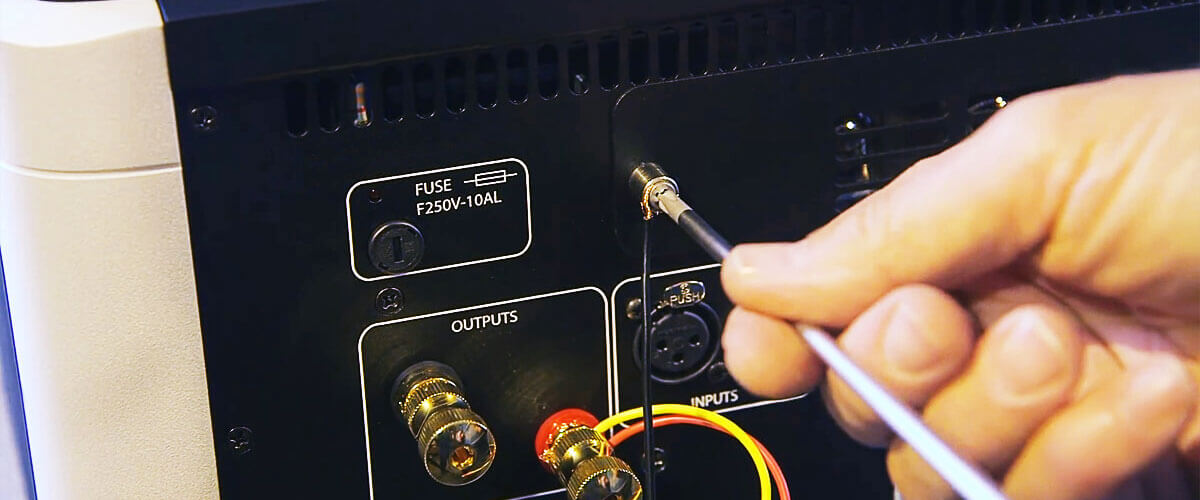
Whether you are working with a conventional AV receiver, an amplifier, or a stereo receiver grounding, you should be aware of the precautions. Now, I will cover essential safety considerations to ensure a secure environment during the grounding process.
Important safety precautions to keep in mind when grounding your AV receiver
It is important to prioritize safety when working with electrical components. Here are some important precautions to keep in mind when grounding your AV receiver:
- Always turn off and disconnect the AV receiver from the power supply.
- Wear appropriate personal protective equipment.
- Familiarize yourself with the electrical system and its components.
- Make sure the ground path is secure, well-connected, and not damaged or corroded.
- Avoid using damaged or worn ground wires or components.
- Avoid contact with live wires.
- Follow the “one hand rule”, namely, keep one hand in your pocket or away from the circuit to minimize the risk of electric shock in the event of an accident.
- Periodically inspect ground connections and components for any signs of damage, wear, or loose connections.
By following these precautions, you can minimize the risks associated with grounding your AV receiver and provide a safe environment for yourself and others involved.
Tips for avoiding electrical shock and other hazards
When working on electrical systems, it is imperative that safety be given top priority to avoid electrical shock and other potential hazards. Here are some tips to help you avoid electric shock and other dangers:
- Always turn off the power and unplug devices before working on electrical components.
- Check electrical cords, outlets, and equipment regularly for signs of damage.
- Install the GFCI in moisture-prone areas such as bathrooms and kitchens.
- Make sure all electrical wiring is done by a qualified person and complies with local electrical codes.
- Use insulated tools specifically designed for electrical work.
- If you have children in your family, consider using protective socket covers.
These tips will help you greatly reduce your risk of electric shock and other hazards, creating a safer environment for yourself and those around you.
FAQ
Why is proper grounding important for AV receivers?
Proper grounding for AV receivers ensures safety, prevents shocks, reduces interference, improves signal quality, and protects equipment.
Can I use a surge protector or power conditioner to help with grounding issues?
In fact, these devices are designed to protect equipment from power surges and improve power quality but may not solve grounding problems. It is extremely important to deal with grounding issues separately by making sure that proper grounding connections are made and that proper wiring practices are followed.
Can using unshielded or low-quality cables cause grounding issues?
Unshielded or low-quality cables can cause grounding issues by allowing interference, leading to noise, hum, and signal distortions in the AV system.
